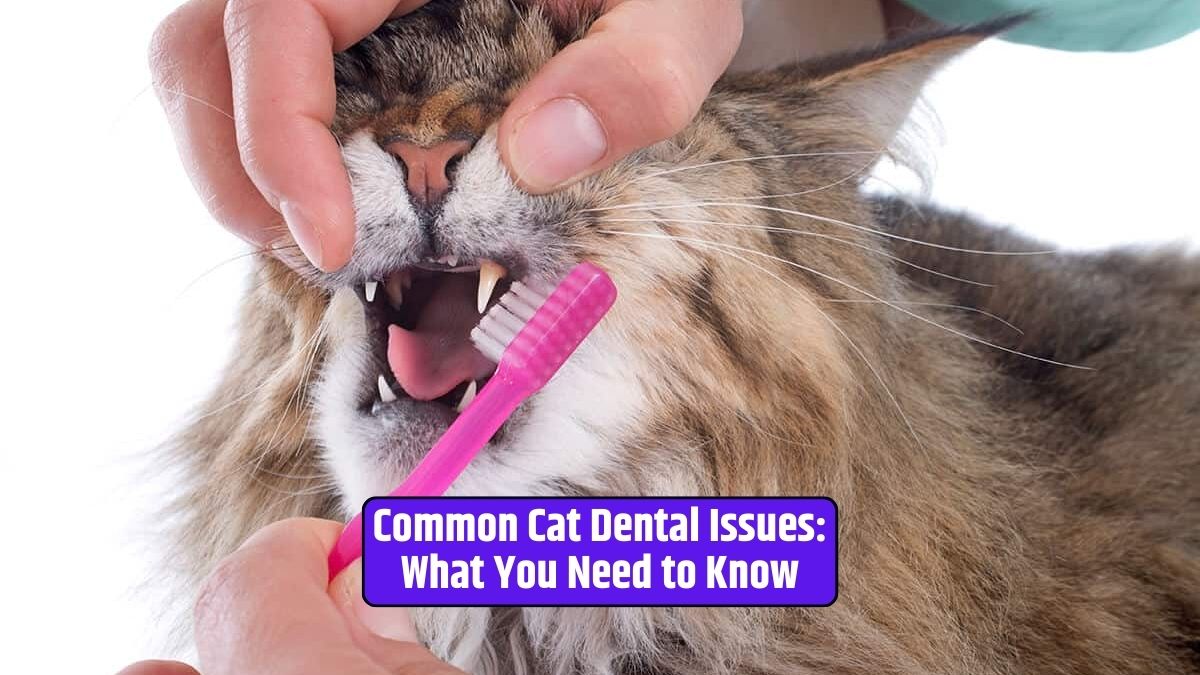When it comes to your feline friend’s health, dental care is often an overlooked aspect. Just like humans, cats can face various dental issues that, if left unaddressed, can lead to discomfort and serious health problems. In this article, we’ll explore the common cat dental issues, their causes, and how to prevent and treat them.
Importance
Before we delve into specific dental issues, it’s crucial to understand why dental health matters for your cat. A healthy mouth contributes to their overall well-being.
Cats use their teeth not only for eating but also for grooming, playing, and even defending themselves. Neglecting dental care can lead to pain, infection, and a lower quality of life for your beloved pet.
Dental Plaque
Cause: Plaque, a sticky film of bacteria, naturally forms on your cat’s teeth. Over time, it hardens into tartar.
Prevention: Regular brushing and dental treats can help prevent the buildup of plaque and tartar.
Treatment: In advanced cases, a professional dental cleaning performed by a veterinarian is necessary.
Gingivitis
Cause: Gingivitis is often a result of untreated plaque and tartar. It leads to inflamed gums and can be painful for your cat.
Prevention: Good dental hygiene, including brushing, can prevent gingivitis.
Treatment: Your vet may recommend professional cleaning and sometimes antibiotics to treat gingivitis.
Periodontal Disease
Cause: Untreated gingivitis can progress to periodontal disease, which affects the tissues and bones supporting the teeth.
Prevention: Early intervention and good dental hygiene are essential in preventing periodontal disease.
Treatment: Advanced cases may require tooth extraction and specialized dental care.
Tooth Resorption
Cause: Tooth resorption is a painful condition where a cat’s own body reabsorbs the tooth structure. The exact cause is still not entirely understood.
Prevention: Unfortunately, there is no surefire way to prevent tooth resorption.
Treatment: Affected teeth need to be extracted to alleviate pain.
Bad Breath
Cause: Bad breath in cats can result from various dental issues, including plaque, gingivitis, and periodontal disease.
Prevention: Addressing the underlying dental problems can help eliminate bad breath.
Treatment: Treating the specific dental issue causing bad breath will usually resolve the problem.
Oral Tumors
Cause: Oral tumors can develop in a cat’s mouth, and they can be both benign and malignant.
Prevention: Early detection is key. Regular dental check-ups can help identify tumors in their early stages.
Treatment: Treatment options vary depending on the type and stage of the tumor. Surgical removal is often necessary.
Conclusion
Cat dental issues are common, but they are also highly preventable. Regular dental care, including brushing your cat’s teeth and providing dental treats, is essential in maintaining good oral health.
Additionally, scheduling regular veterinary check-ups will ensure that any emerging problems are caught early and treated effectively.
Remember, your cat’s dental health directly impacts their overall well-being. By addressing and preventing these common dental issues, you can help your furry companion lead a happier and healthier life.
FAQs
How often should I brush my cat’s teeth?
Ideally, you should brush your cat’s teeth at least a few times a week. Daily brushing is even better for preventing dental issues.
What are the signs of dental problems in cats?
Signs include bad breath, drooling, difficulty eating, pawing at the mouth, and inflamed gums.
Can I use human toothpaste for my cat?
No, you should always use cat-specific toothpaste, as human toothpaste can be harmful to cats if ingested.
Are there dental treats that help prevent dental issues in cats?
Yes, there are dental treats designed to reduce plaque and tartar buildup.
When should I take my cat for a dental check-up?
It’s recommended to have a dental check-up at least once a year. However, if you notice any signs of dental problems, schedule a visit with your veterinarian.









